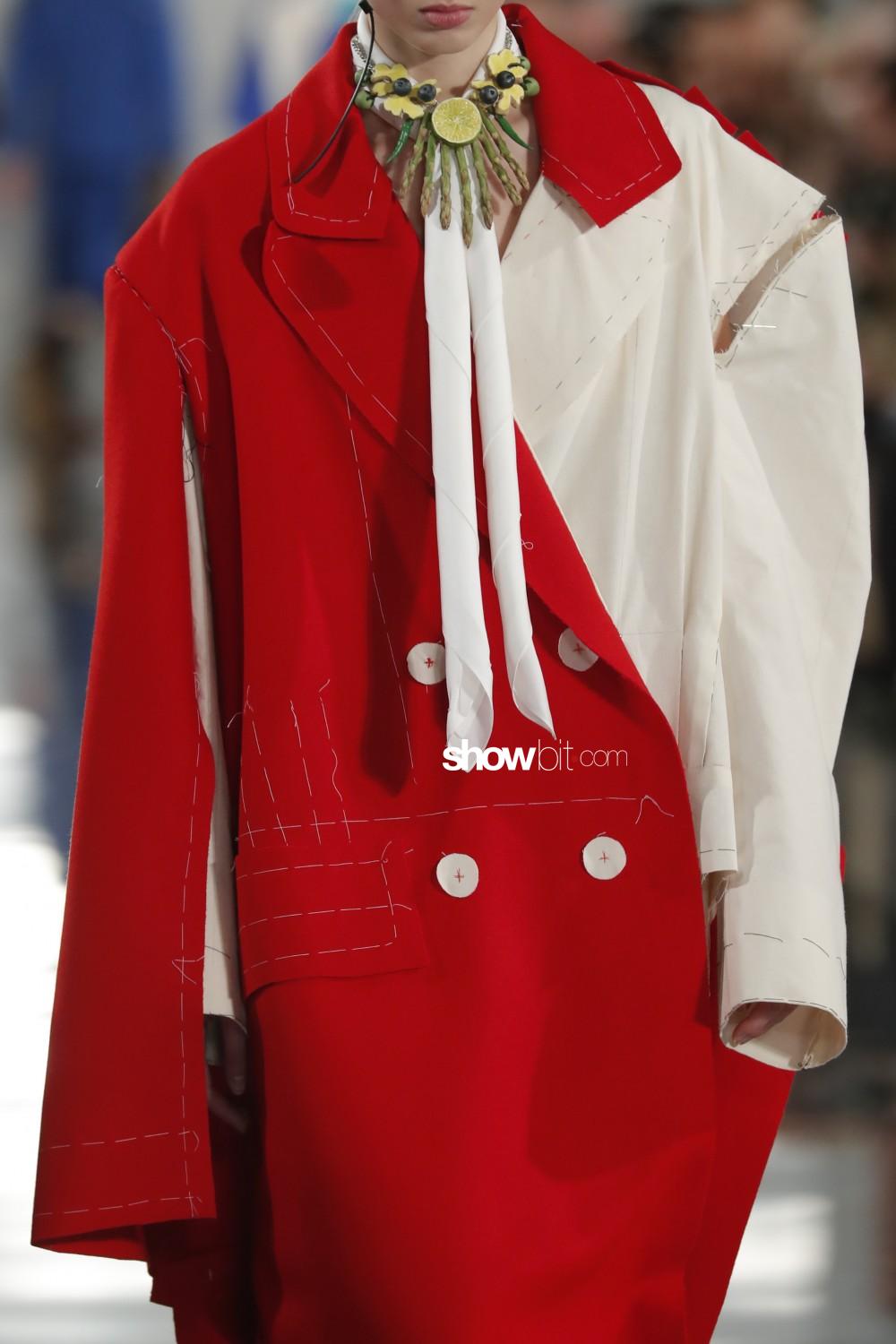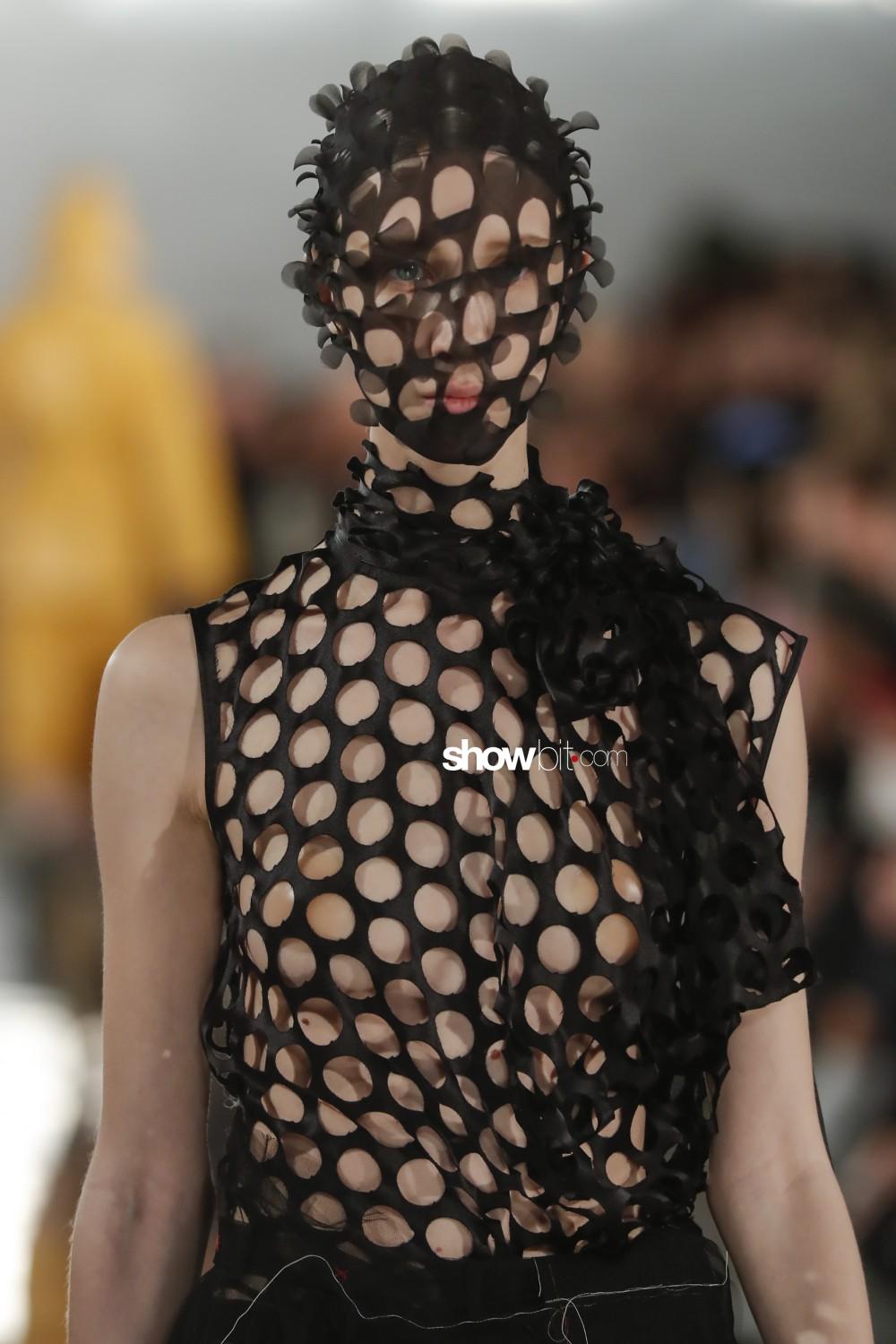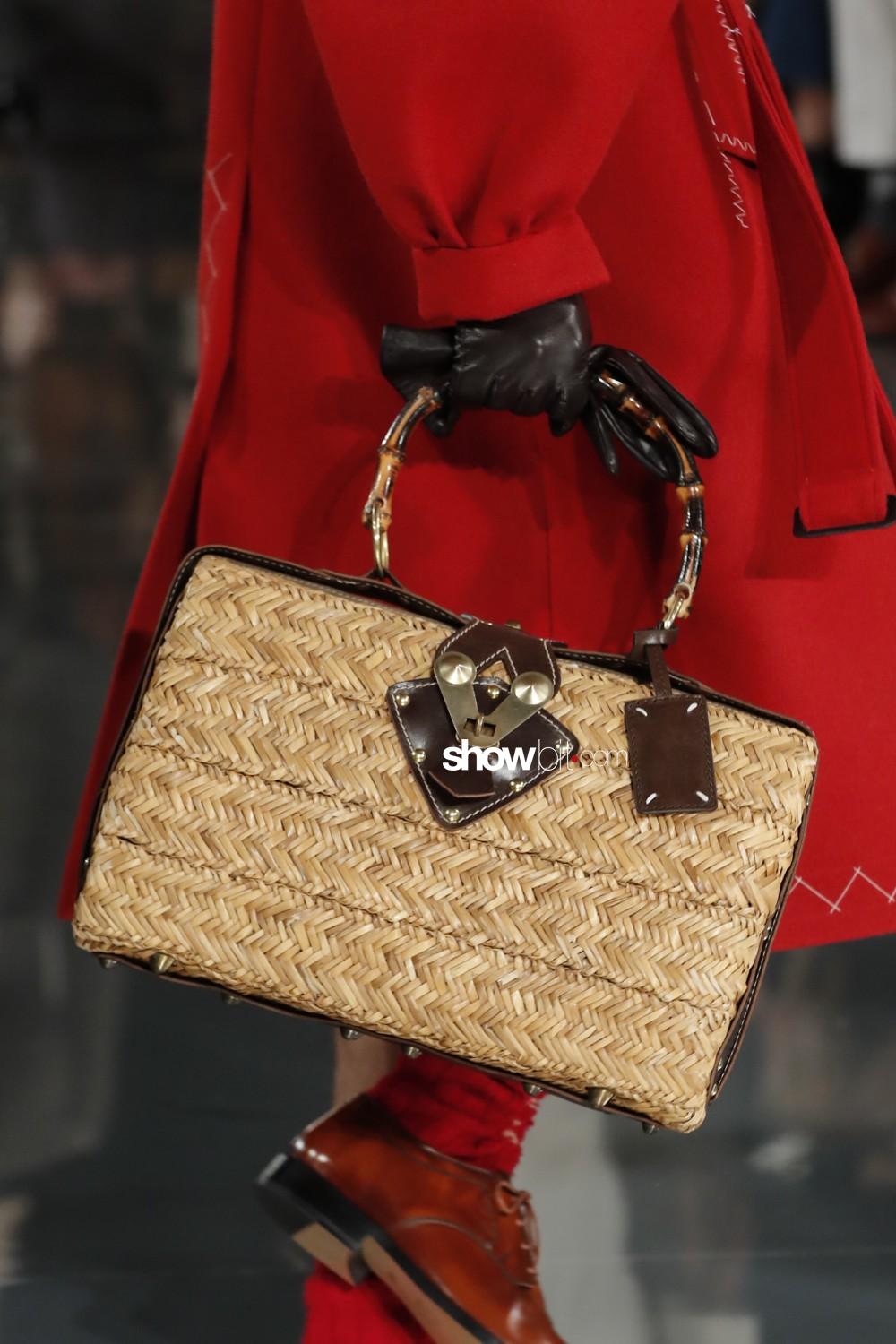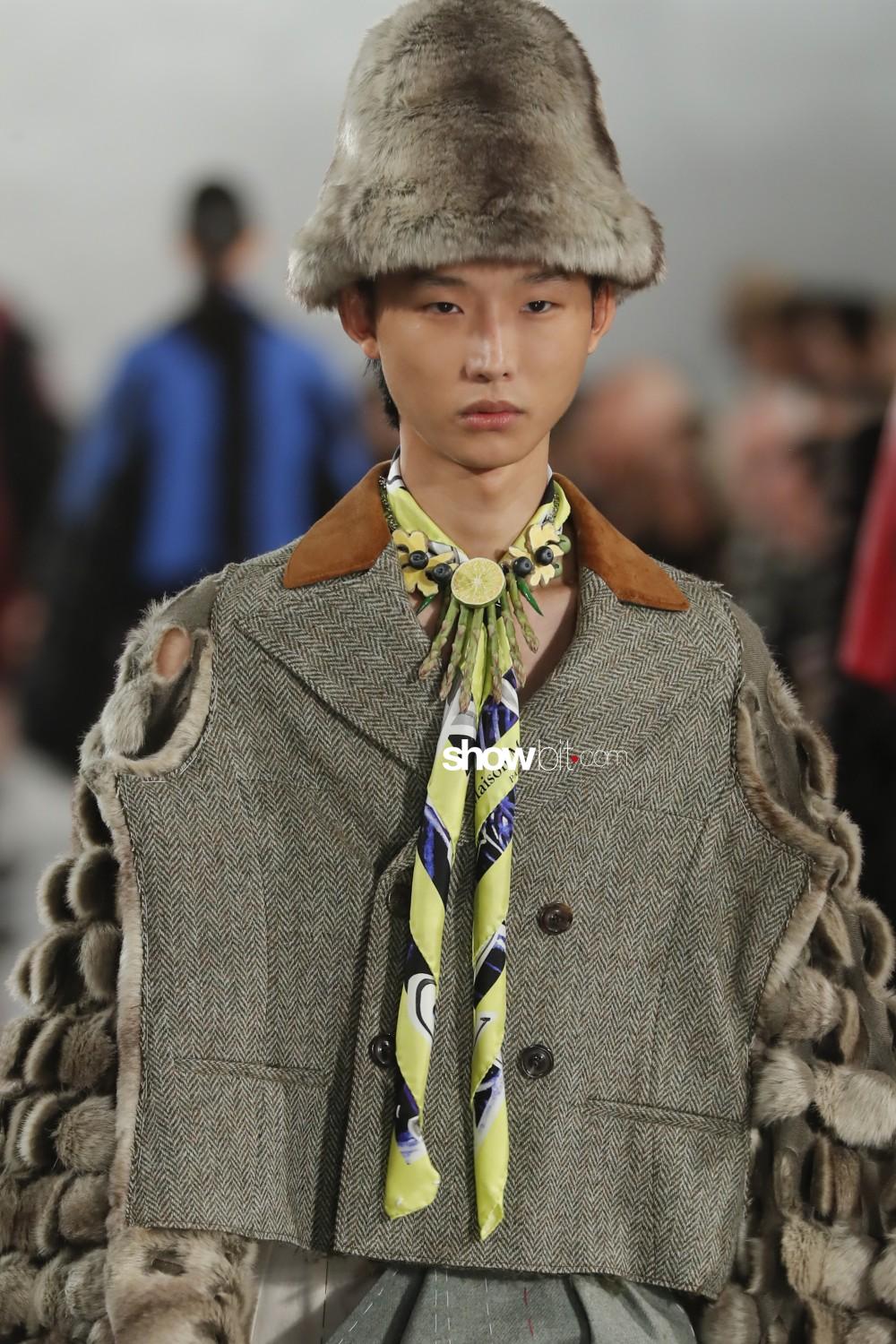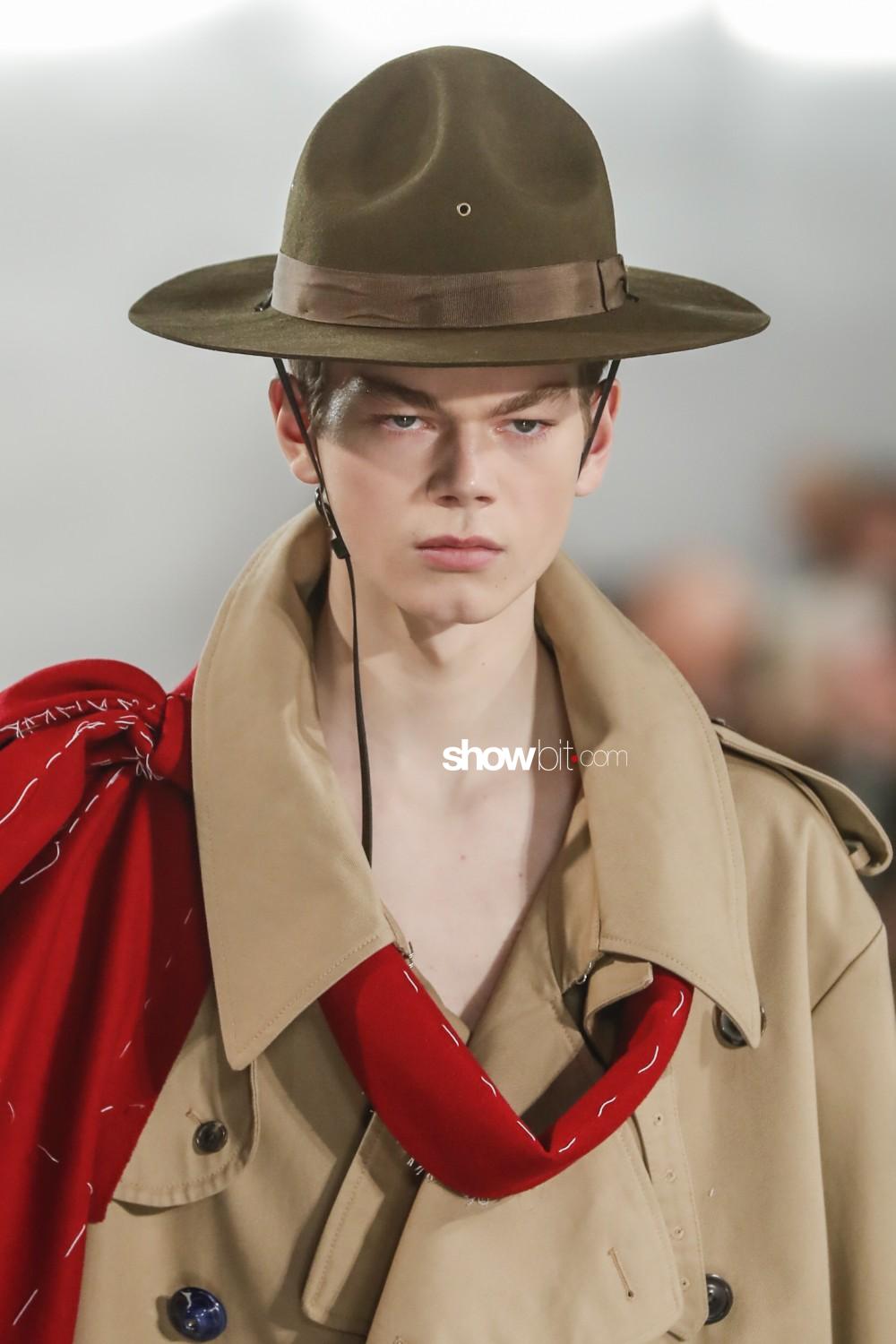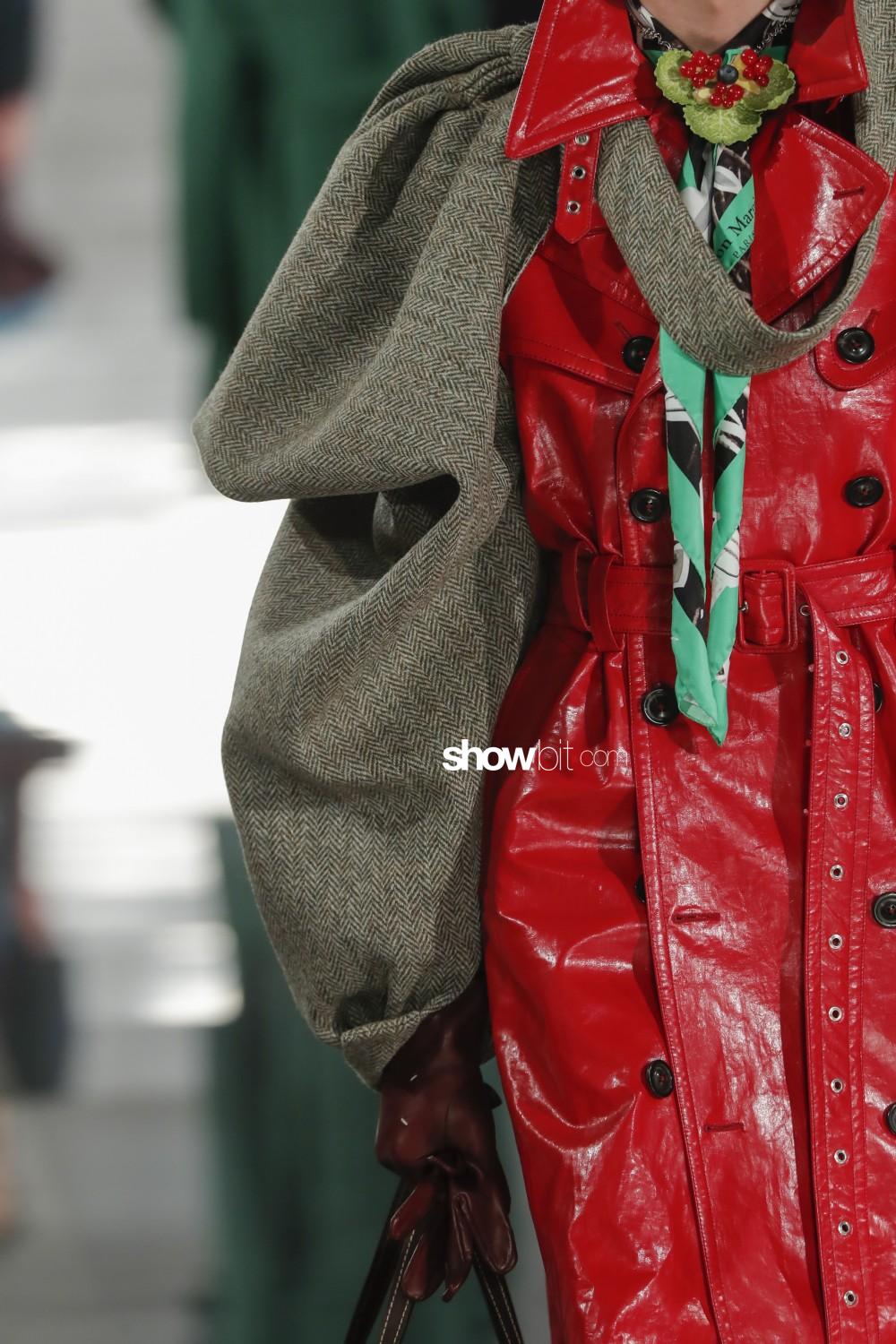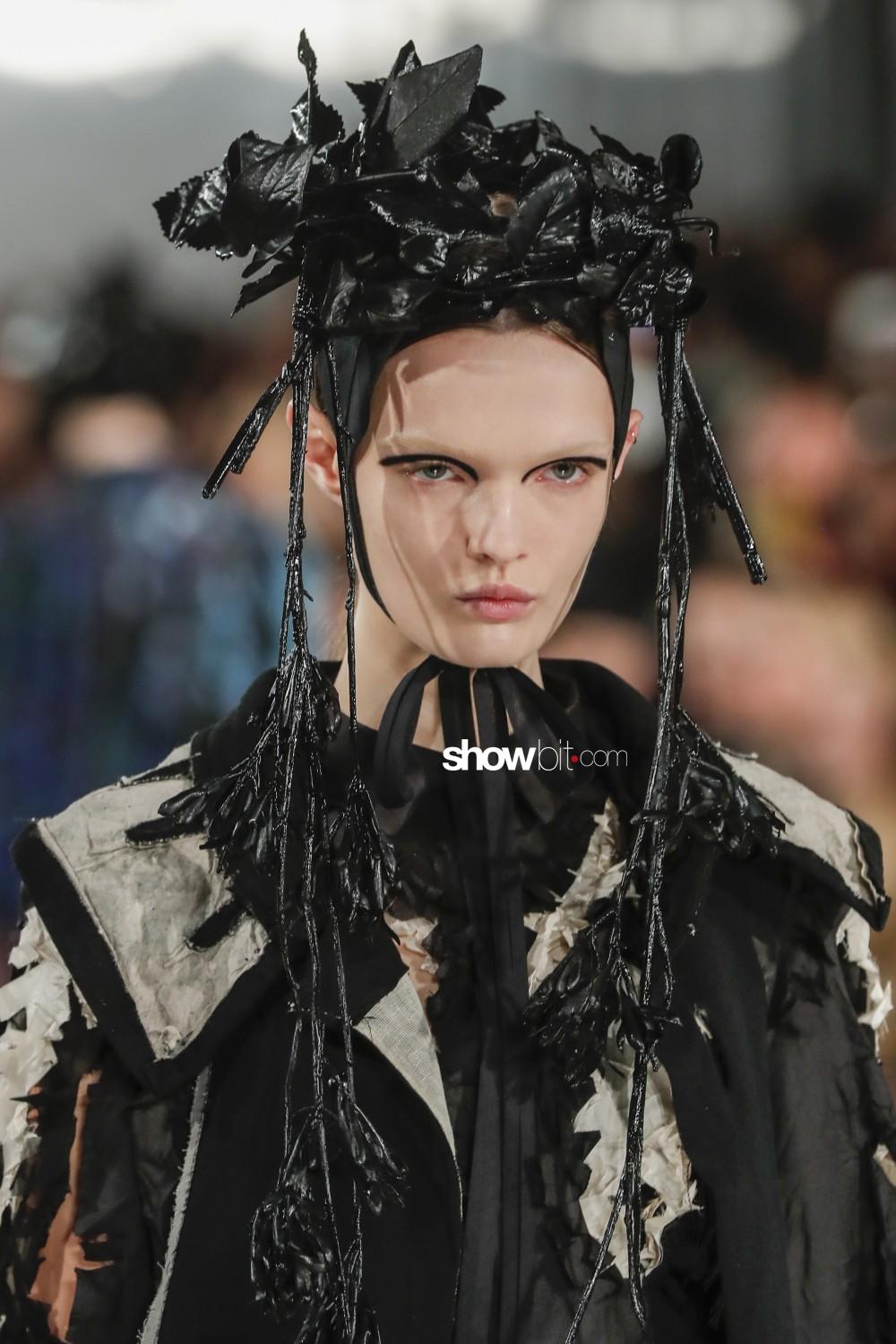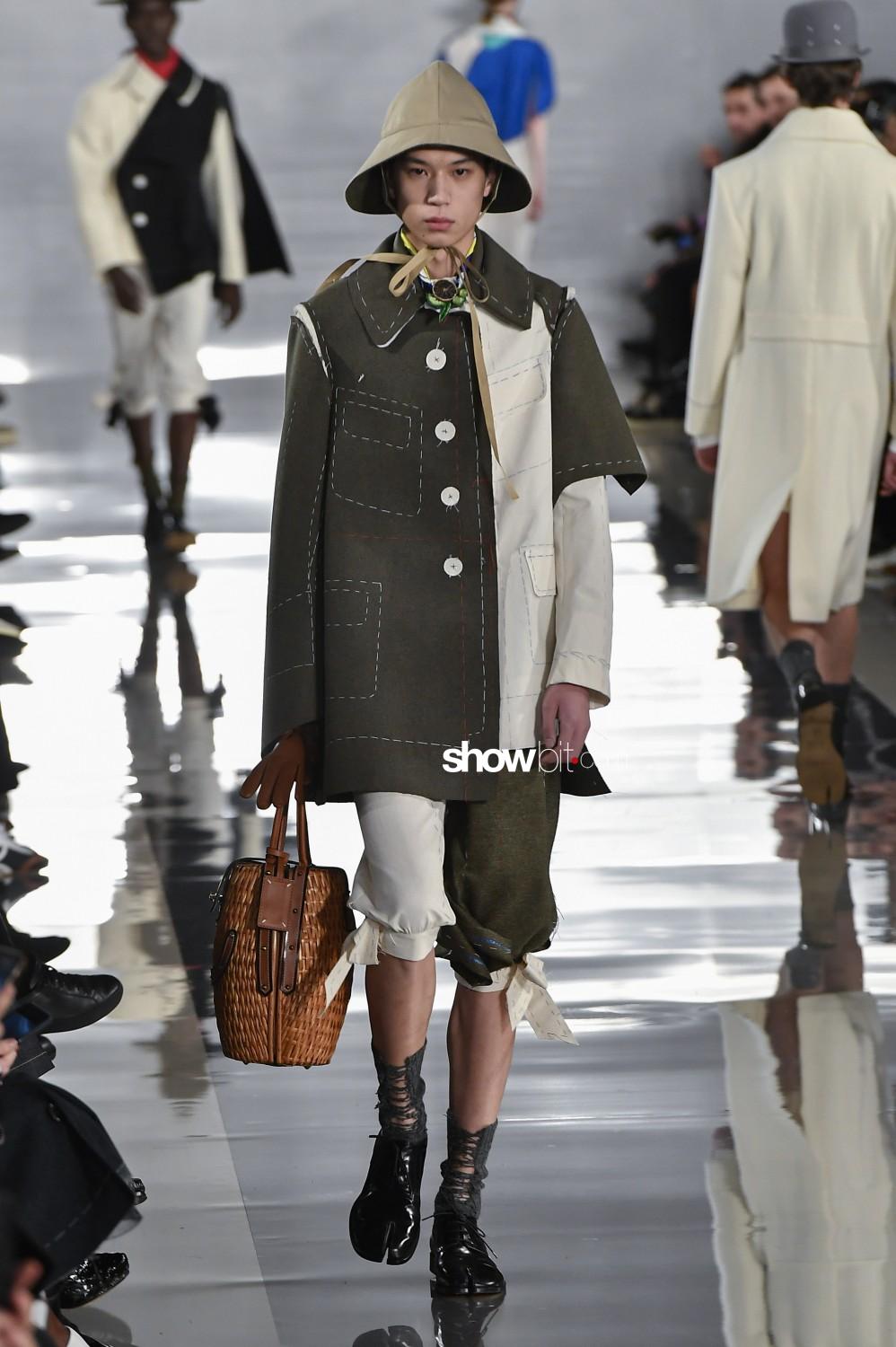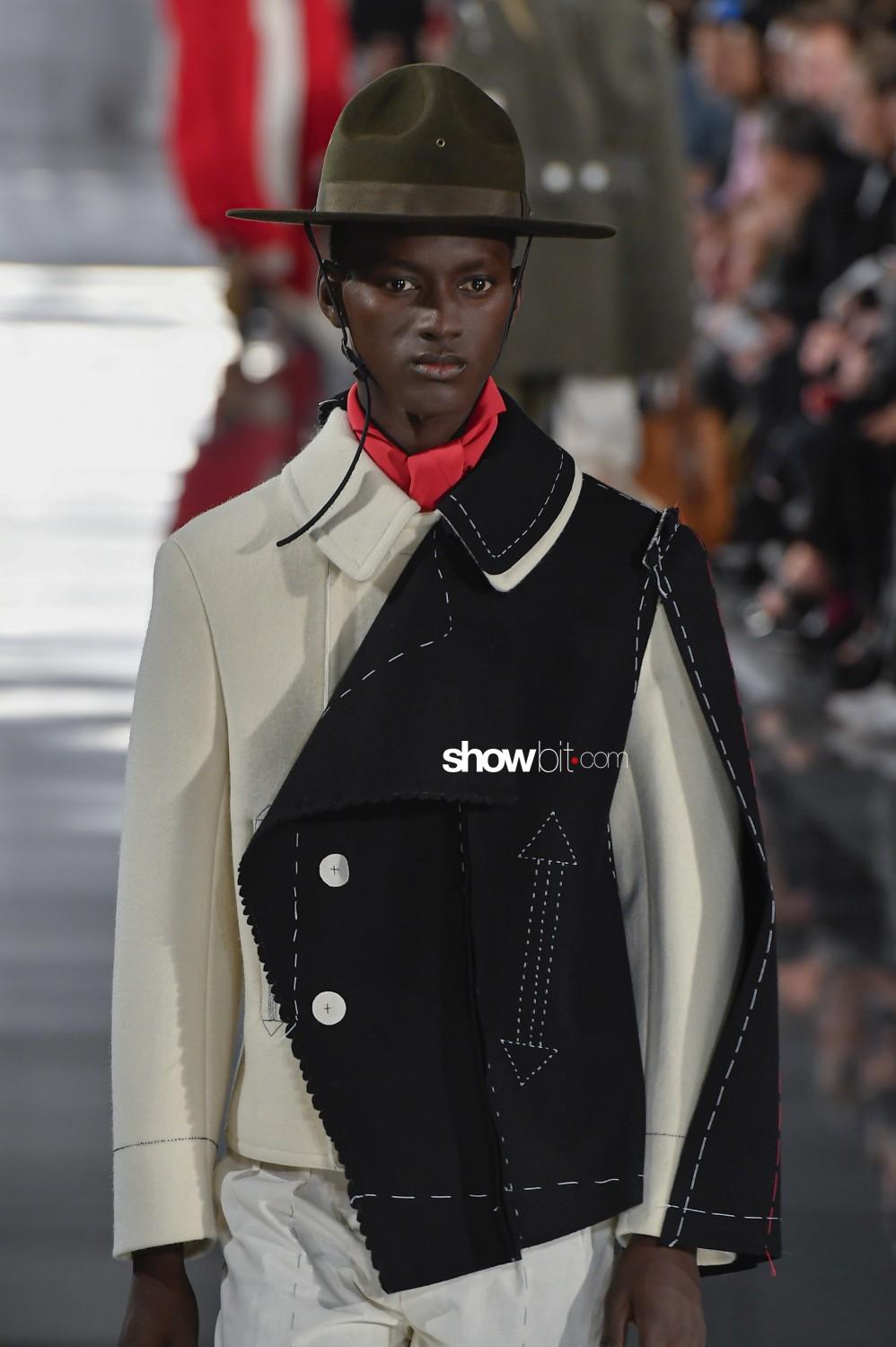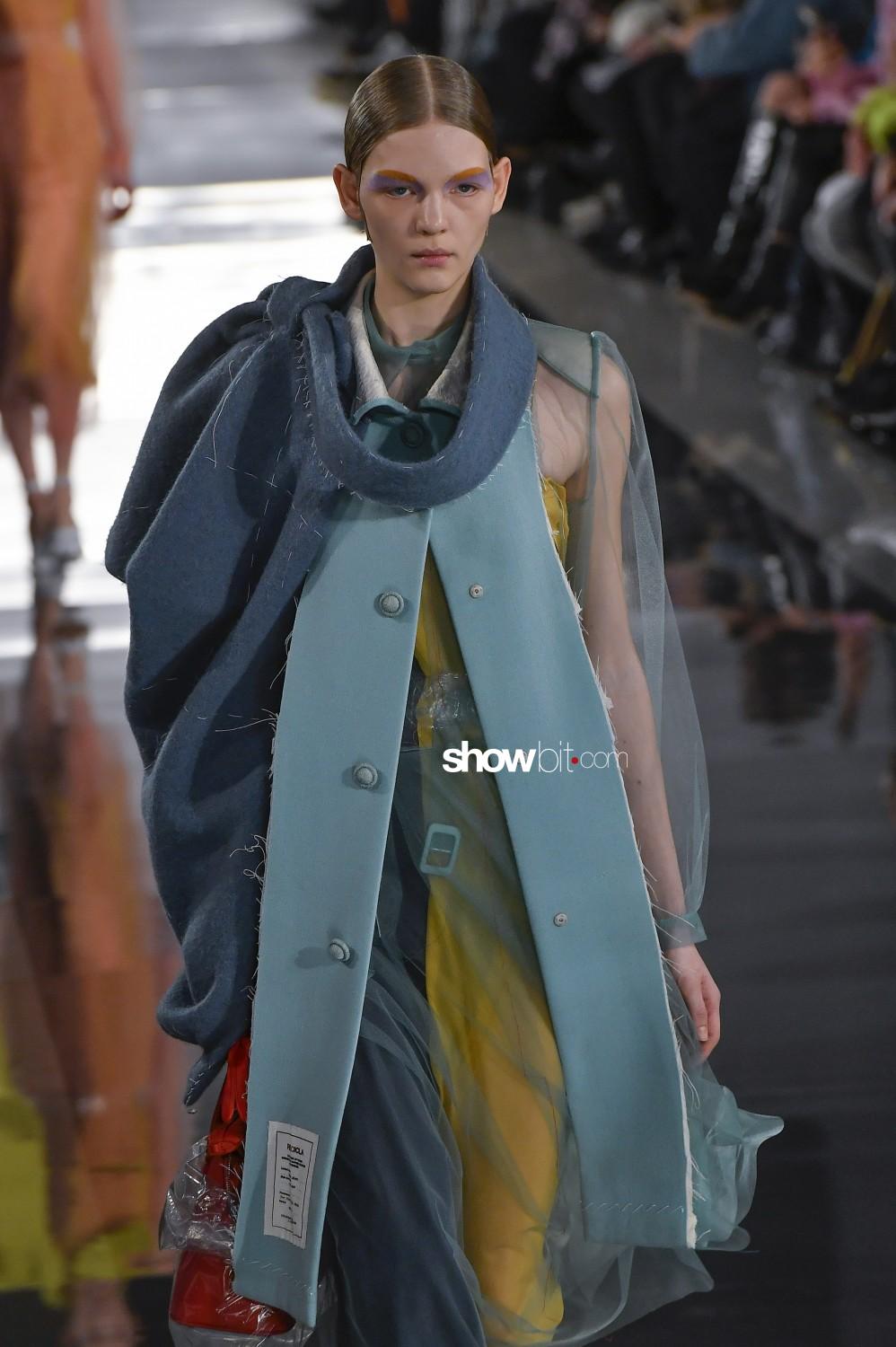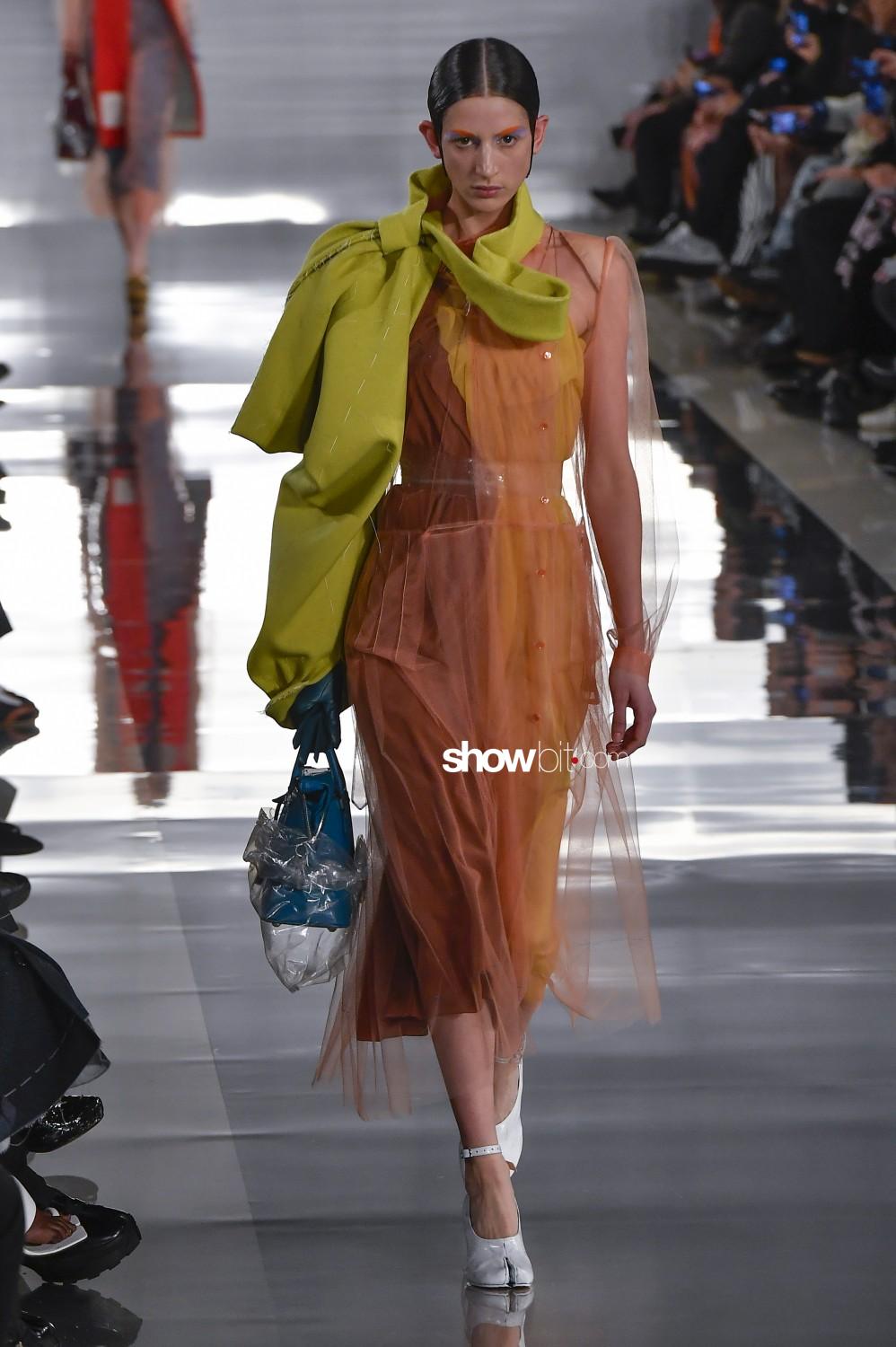See all the close-up images: Maison Margiela – close-up Fall / Winter 2020
See all the full-length images: Maison Margiela – Fall /Winter 2020
Recicla, the Fall 2020 collection
There is one phrase in Zafón’s bestseller The labyrinth of the Spirits that, to tell the truth has nothing to do with Margiela, yet it would well define Margiela’s approach, and it says: Artworks never end. The trick stands in knowing at what point they need to be left unfinished.
Deconstructed and non-finished garments; raw cuts and rips, upside down and inside out: they’re all intentional results that, season after season, make what is Maison Margiela‘s uniqueness in the playground of countless fashion brands.
This time, for “Recicla” – a series of limited-edition, vintage reworks conceived for Fall 2020 – John Galliano‘s experimentation geared towards upcycled clothing, an anything-but-new approach since the early days of Maison Margiela in the 1980’s.
When Sustainability was still an unknown word, it already embedded Martin Margiela‘s deepest essence, in the form of his radical, atypical take in the fashion system: shying away from the consumeristic and frenetic fashion schedules, reinventing the fashion schemes in his own terms and point of view against all form of glam; against all form of celebrity endorsement, playing the card of anonymity; creating fashion out of nothing, through inconceivable materials and a destructivist tailoring that, once and for all, brought the status quo to stumble.
Over the years, Martin Margiela built his brand’s DNA around unorthodox materials, humble fabrics, reinvented found garments, and microbiological treatments he deliberately applied to fabrics, in order to confer them the appearance of consumption and destruction. Anything he created was in respect of the past and of the emotional repercussion that came with aged clothing.
Inside the perspective of the house’s legacy of deconstruction as a fashion statement, for Fall 2020 (as well as in the past collections) craftsmanship is once again put on stage in its roughest form, intending to unveil the experimental process in tailoring. Here’s where Margiela’s beauty stands: an incompleteness that allows infinite future possibilities, open to variation over time; which materializes in the form of a well visible, white stitching that retraces the whole collection from start to finish – both physically and conceptually.
Galliano played with the bourgeois symbols, by literally tearing apart old trench coats and uniforms, to finally submit them to a radical morphing process. They’re deprived of the outward layer, ripped up to the intrinsic structure, revealing linings and threads, facings and backings. Some toile prototypes are put into the mix, referencing the dress-making process in its earlier stages. Shoulder pads, exposed seams and pockets gradually recreate the silhouette of a coat, made of imperceptible, translucent tulle layers; in contrast with them, more rigid and consistent textiles are draped into asymmetric, unexpected volumes. The front silhouette of a blazer is taken apart at the seams, and worn in its two-dimensional shape.
That of destruction and decadence is actually a misleading appearance that, au contraire, hides a sprout of creative construction: only by going to the heart of the concept, Galliano finds the potentiality of restoration and transformation of any past forms (in fashion, or more likely, in the society structure) that are no longer valuable for the future. That’s the ultimate revolution, for the better.
These photos are only a low resolution demonstration.
If you want to use the hight resolution, you must subcribe to our images database. You may ask us any commercial information simply filling out our Contact Form. For editorial use only.
Follow us with the hashtag #showbitcom


